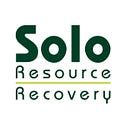Managing Construction Waste: A Step-By-Step Guide to Disposal
Whether large or small, construction projects generate a substantial amount of waste, and properly managing construction waste is not only a legal requirement, but also a responsible environmental practice. In this guide we will explore the step-by-step process of managing construction waste, from collection to disposal, and how to ensure that it is done efficiently and in compliance with Australian standards and regulations.
Step 1: Construction Waste Collection
The first step in managing construction waste is the efficient collection of waste materials. Here is how you can do it:
1. Site Segregation: Establish designated areas on the construction site for different types of waste, such as wood, metal, concrete, and general waste, and clearly label and separate these areas to facilitate ease of disposal and recycling.
2. Use Appropriate Collection Containers: Utilise the correct containers for waste collection. These should be sturdy, leak-proof, and properly labeled to prevent confusion about what goes where. Solo can provide these types of containers.
3. Regular Inspection: Undertake regular inspections of waste collection areas to ensure proper waste separation and disposal. This helps maintain a clean and organized worksite.
4. Train Your Workforce: Ensure that all workers are aware of the construction waste collection process and know the importance of proper segregation. Provide training on which materials can be recycled and which should be disposed of as general waste.
5. Partner with a Reliable Collection Service: Partner with a professional construction waste collection service provider like Solo. We can pick up your waste regularly, ensuring a more organized and efficient process.
Step 2: Construction Waste Sorting
Once collected, construction waste needs to be sorted to determine what can be recycled and what should be disposed of. Here’s how to do it effectively:
- Waste Separation: Divide waste materials into categories such as recyclables and general waste and provide clear guidelines and labels to prevent confusion.
2. Recyclable Materials: Materials like concrete, wood, and metal can often be recycled. Arrange for these materials to be collected and sent to recycling facilities that can process and reuse them in future construction projects.
3. General Waste: The remaining waste materials that can’t be recycled should be disposed of correctly, typically through landfills or waste-to-energy facilities.
Step 3: Construction Waste Disposal
The disposal stage is where you make decisions about the destination of your construction waste, and it is at this stage that Solo can provide you with invaluable advice:
1. Landfills: For non-recyclable, non-hazardous waste, landfills are one disposal option. Solo can collect your refuse and deliver it to a licensed landfill facility, ensuring that any waste is transported and disposed of safely.
2. Recycling Facilities: Recyclable materials, such as concrete, metal, and wood, should be sent to appropriate recycling facilities. This not only reduces waste but also conserves natural resources.
3. Waste-to-energy Plants: Some areas have waste-to-energy plants that can convert certain types of waste into energy. Check if this option is available and feasible for your construction waste.
Step 4: Construction Waste Removal
The efficient removal of waste is important to prevent the accumulation of waste on the construction site and to maintain a clean and safe working environment:
1. Scheduled Pickups: If you partner with Solo, we can arrange a scheduled pickup routine to remove waste from your site which will align with your waste generation rate.
2. Documentation: You should maintain records of waste removal activities, including the type and quantity of waste removed from disposal destinations, and any recycling efforts. This documentation is important for compliance and future reference and planning.
Step 5: Compliance with Regulations
Managing construction waste involves a commitment to complying with Australian regulations and standards. Here’s what you need to keep in mind:
1. Environmental Protection: Australian environmental regulations require the responsible disposal of waste materials to prevent damage to the natural environment. This includes the proper disposal of hazardous waste and the recycling of recyclable materials.
2. Local Regulations: Local councils may have specific regulations related to construction waste management. It is crucial to check with your local council to ensure that you are complying with their requirements.
3. Permits and Licenses: Depending on the type and volume of waste generated, you may need permits or licenses for disposal. Be sure to obtain these as needed.
4. Reporting: Keep detailed records and reports of waste management activities. These records may be required to demonstrate compliance with regulations and standards during audits or inspections.
Managing Construction Waste in Australia
Construction waste collection, sorting, removal, and disposal are important aspects of responsible construction site practices in Australia. Correctly managing construction waste not only ensures compliance with regulations but also contributes to environmental sustainability and resource conservation. By following the steps provided in this article, construction professionals can minimize their impact on the environment while maintaining efficient and organized construction worksites.
